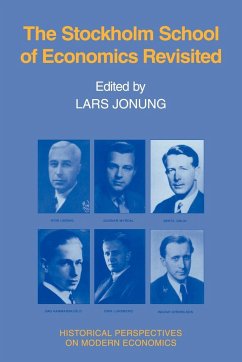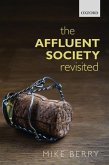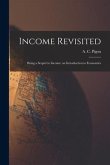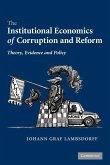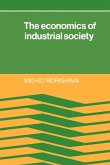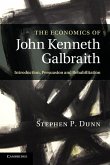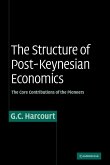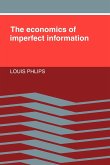A readable collection for anyone interested in economic history, history of economic thought, or the ideas lying behind Swedish economic policy.
In this volume leading scholars look at the heritage and impact of the important work done by the Stockholm School from the 1920s to the present. The first part of The Stockholm School of Economics Revisited covers the early years and is followed by an extensive review of the approaches to economics adopted by the school. A number of contributors investigate the Stockholm School's relation to and impact on their own work, the work of other economists, and the approaches pursued by other schools. A final round-table discussion delves into the question 'What remains of the Stockholm School?' A readable collection for anyone interested in economic history, history of economic thought, or the ideas lying behind Swedish economic policy.
Table of contents:
Preface; Dramatis personae at the end of 1937 Klas Fregert; Introduction and summary Lars Jonung; Part I. The Roots: 1. The political economy club and the Stockholm school, 1917-1951 Rolf G. H. Henriksson; Comment Gustav Cederwall; 2. Gösta Bagge, the Rockefeller Foundation, and empirical social science research in Sweden, 1924-1940 Earlene Craver; Comment Benny Carlson; Comment Bengt Metelius; 3. The communities on unemployment and the Stockholm school Eskil Wadensjö; Comment Bo Gustafsson; Comment Otto Steiger; Part II. The Approach of the Stockholm School: 4. Expectation and plan: the microeconomics of the Stockholm school Claes-Henric Siven; Comment William J. Baumol; 5. Sequence analysis and optimization Karl O. Faxén; 6. There were two Stockholm schools Lars Werin; 7. On formal dynamics: from Lundberg to chaos analysis William J. Baumol; Comment Björn Thalberg; Comment Kumaraswamy Velupillai; 8. Lundberg, Keynes, and the riddles of a general theory Claes Berg; Comment Mats Persson; 9. Macrodynamics and the Stockholm school Hans Brems; Comment Björn Hansson; 10. Ohlin and the general theory Robert W. Clower; Comment Assar Lindbeck; Comment Don Patinkin; 11. The monetary economics of the Stockholm school Johan Myrman; 12. The Austrians and the Stockholm school: two failures in the development of modern macroeconomics? David Laidler; Comment Axel Leijonhufvud; 13. The political arithmetrics of the Stockholm school Kumaraswamy Velupillai; Comment Jan Petersson; 14. After the Stockholm school Björn Hansson; Comment David Laidler; Comment Lars E. O. Svensson; Part III. The Impact of the Stockholm School: 15. The Swedish influence on Value and Capital Sir John Hicks; 16. The London school of economics and the Stockholm school in the 1930s Nadim Shehadi; Comment Brinley Thomas; 17. Thoughts on the Stockholm school and on Scandinavian economics Paul A. Samuelson; Comment Don Patinkin; 18. Ragnar Frisch and the Stockholm school Jens Christopher Andvig; Comment Björn Thalberg; 19. The late development of the Stockholm school and the criticism from John Ã...kerman Jan Petersson; Comment Rolf G. H. Henriksson; Part IV. What Remains of the Stockholm School?: Roundtable discussion Assar Lindbeck, Don Patinkin, David Laidler, Kumaraswamy Velupillai, and Axel Leijonhufvud; The Stockholm school: a non-Swedish bibliography compiled by Klas Fregert.
Hinweis: Dieser Artikel kann nur an eine deutsche Lieferadresse ausgeliefert werden.
In this volume leading scholars look at the heritage and impact of the important work done by the Stockholm School from the 1920s to the present. The first part of The Stockholm School of Economics Revisited covers the early years and is followed by an extensive review of the approaches to economics adopted by the school. A number of contributors investigate the Stockholm School's relation to and impact on their own work, the work of other economists, and the approaches pursued by other schools. A final round-table discussion delves into the question 'What remains of the Stockholm School?' A readable collection for anyone interested in economic history, history of economic thought, or the ideas lying behind Swedish economic policy.
Table of contents:
Preface; Dramatis personae at the end of 1937 Klas Fregert; Introduction and summary Lars Jonung; Part I. The Roots: 1. The political economy club and the Stockholm school, 1917-1951 Rolf G. H. Henriksson; Comment Gustav Cederwall; 2. Gösta Bagge, the Rockefeller Foundation, and empirical social science research in Sweden, 1924-1940 Earlene Craver; Comment Benny Carlson; Comment Bengt Metelius; 3. The communities on unemployment and the Stockholm school Eskil Wadensjö; Comment Bo Gustafsson; Comment Otto Steiger; Part II. The Approach of the Stockholm School: 4. Expectation and plan: the microeconomics of the Stockholm school Claes-Henric Siven; Comment William J. Baumol; 5. Sequence analysis and optimization Karl O. Faxén; 6. There were two Stockholm schools Lars Werin; 7. On formal dynamics: from Lundberg to chaos analysis William J. Baumol; Comment Björn Thalberg; Comment Kumaraswamy Velupillai; 8. Lundberg, Keynes, and the riddles of a general theory Claes Berg; Comment Mats Persson; 9. Macrodynamics and the Stockholm school Hans Brems; Comment Björn Hansson; 10. Ohlin and the general theory Robert W. Clower; Comment Assar Lindbeck; Comment Don Patinkin; 11. The monetary economics of the Stockholm school Johan Myrman; 12. The Austrians and the Stockholm school: two failures in the development of modern macroeconomics? David Laidler; Comment Axel Leijonhufvud; 13. The political arithmetrics of the Stockholm school Kumaraswamy Velupillai; Comment Jan Petersson; 14. After the Stockholm school Björn Hansson; Comment David Laidler; Comment Lars E. O. Svensson; Part III. The Impact of the Stockholm School: 15. The Swedish influence on Value and Capital Sir John Hicks; 16. The London school of economics and the Stockholm school in the 1930s Nadim Shehadi; Comment Brinley Thomas; 17. Thoughts on the Stockholm school and on Scandinavian economics Paul A. Samuelson; Comment Don Patinkin; 18. Ragnar Frisch and the Stockholm school Jens Christopher Andvig; Comment Björn Thalberg; 19. The late development of the Stockholm school and the criticism from John Ã...kerman Jan Petersson; Comment Rolf G. H. Henriksson; Part IV. What Remains of the Stockholm School?: Roundtable discussion Assar Lindbeck, Don Patinkin, David Laidler, Kumaraswamy Velupillai, and Axel Leijonhufvud; The Stockholm school: a non-Swedish bibliography compiled by Klas Fregert.
Hinweis: Dieser Artikel kann nur an eine deutsche Lieferadresse ausgeliefert werden.

